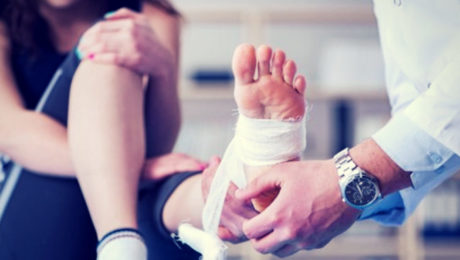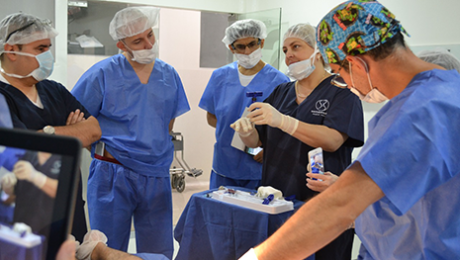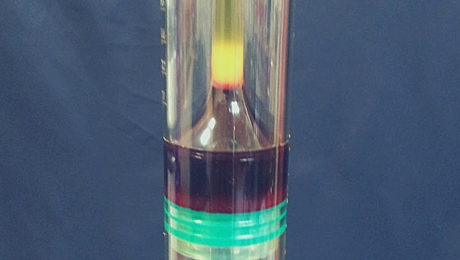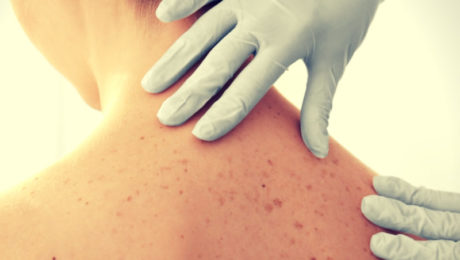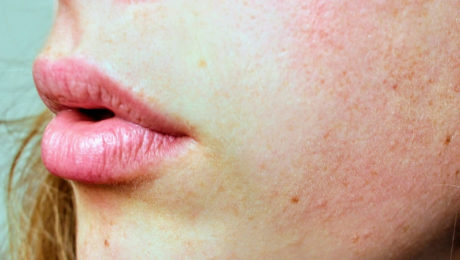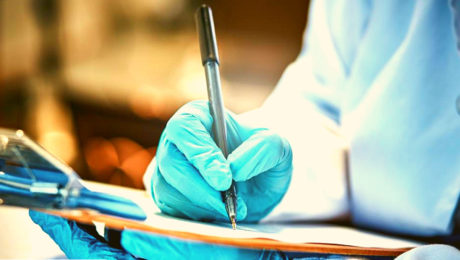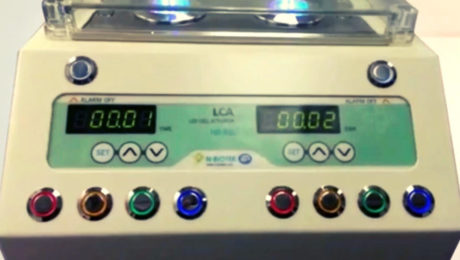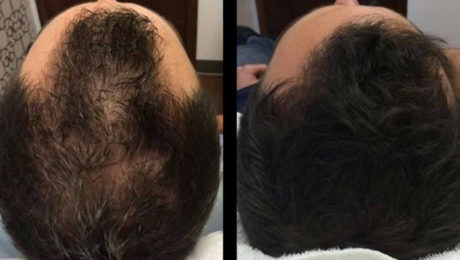How Foot and Ankle Surgeons Can Benefit From PRP
TUESDAY, 03 APRIL 2018 / PUBLISHED IN BLOG
Since it is a new science, many people are skeptical about Platelet-Rich Plasma, otherwise known as PRP. There are some studies out there that state that PRP works no better than a similarly administered placebo, but there are many other studies and doctors that claim that PRP works and works well. This also works well at a much lower cost and with fewer side effects than traditional medicine. One branch where the skepticism is loud and clear is podiatry, which deals with feet and ankles. Trying to combat this skepticism can help many surgeons to lower complication rates, improve patient satisfaction, and have better outcomes. For instance, here is a list of cases where PRP has been effective for the feet and ankles.
Plantar Fasciitis
PRP has become rather common as a treatment for Plantar Fasciitis, with many studies to prove the efficacy of this treatment. For instance, Dr. Daanial Kassicieh of Sarasota Neurology claims that PRP is one of the most effective treatments for this condition and that PRP can actually fully cure it. Many of his patients have avoided surgery just by utilizing PRP therapy. This is done with no downtime, no rehabilitation, and no side effects. This would explain why plantar fasciitis is the 5th most popular medical condition treated by PRP. This can be explained by the fact that over 3 million people are diagnosed with this condition and no other treatment really works for it besides, in fact, PRP.
Achilles Tendonitis
This is another condition that can be fairly hard to treat and gets worse over time unless healed. Many surgical approaches are often tricky and generally do not end up with good results. Because of this, the main treatment option is simply to give patients corticosteroids to reduce the pain, but really nothing else to treat the symptoms. However, there have been many studies done that have shown that PRP is a lot more effective, including those from the European Foot and Ankle Society. This means that PRP is a safer and more effective alternative than any other treatments available.
Diabetic Foot Ulcers
Diabetic foot ulcers can be troublesome, especially when they do not heal or heal properly. Over 2.5 million Americans with diabetes suffer from these ulcers. About 11% of these cases may need amputation of the affected limb. However, some studies have noted that just one injection of PRP and a topical solution bi-weekly started to heal the ulcers in just 8 weeks. Topical PRP has also been shown to work better than antiseptic creams as well.
Regenerating Bones
Bone regeneration is most commonly needed in the foot and ankle area. Although mechanical stabilization works best, the utilization of PRP has been surprising. PRP helps with healing bones and soft tissue at the damage site. According to a recent systematic review of 64 articles, the conclusion was to include more PRP therapy into the healing of foot and ankle bones. The science behind this is solid. For bone or tissue to form, three things are needed in the area:
- A scaffold for the growth to take place
- Biological stimulants to signal proteins
- Stem cells that provide bone-building potential
All three of these are crucial for bone formation. PRP can provide at least two of these, so there is no reason to ignore it when it comes to bone regeneration.
Ankle Sprains
This is an incredibly common condition and can be effectively treated by using PRP therapy. In one randomized controlled trial, researchers studied the effects of PRP injections on athletes with ankle sprains. This study showed that not only did PRP reduce the healing time by 20 days, but they also experienced much less pain. This can reduce the recovery period from 6 weeks to just about 2 or 3 weeks.
Immobilization is Vital
When it comes to foot and ankle-related injuries, one thing that really cannot be avoided is rest and rehabilitation. This is true regardless of whether PRP is administered. Because of this, many of the studies that show PRP to be ineffective often don’t use rest and rehabilitation, and that alone can be an issue. PRP is in no way a magic pill. All foot injuries need rest and rehabilitation in order to properly heal. With these two combined, it can drastically reduce healing times.
How Can Foot and Ankle Surgeons Benefit?
Using PRP in foot and ankle injuries is not going anywhere, so utilizing it would be the best way to go. Test it out with your patients, and try using platelet-rich plasma therapy instead of simply prescribing pills or doing costly surgeries. Your patients will thank you in the end.
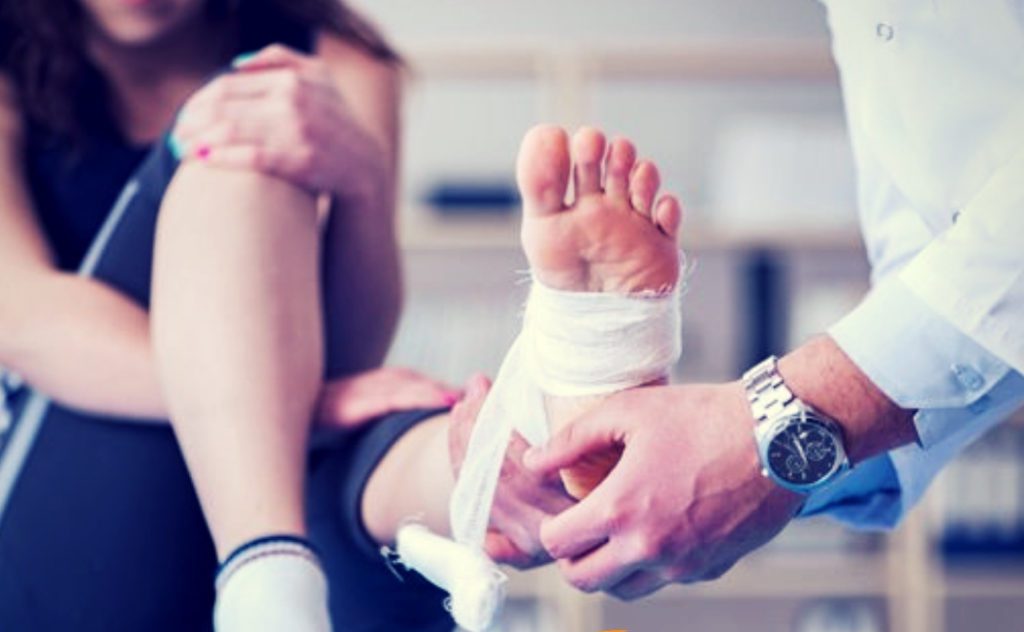
- Published in Blog
Why Should you Include PRP In Your Medical Practice?
MONDAY, 26 MARCH 2018 / PUBLISHED IN BLOG
Platelet-Rich Plasma (PRP) has been a lifesaver for many medical practices, reigniting physicians’ passion for medicine. Not only is it 100% derived from the patient’s own body, but it is also natural and comes with minimal side effects. PRP can treat a wide range of medical conditions, often outperforming other treatment options.
The Simplicity of PRP
One of the most compelling reasons to include PRP in your practice is its simplicity. With an initial investment of about $1000, you can start offering PRP therapies. The equipment is relatively inexpensive and pays for itself quickly.
Long-Term Popularity
PRP is not a passing trend. It has been gaining popularity for years and shows no signs of slowing down. The market for PRP therapies is expected to reach nearly $500 million within the next decade, with an annual growth rate of 12.5% since 2015.
High Patient Satisfaction
Patient satisfaction is another significant advantage. In certain cases, satisfaction rates have been as high as 95%. Patients are often surprised by the efficacy of PRP, believing that their conditions could not be reversed or halted without side effects, downtime, and invasive surgeries.
Meeting the Growing Demand
Now is the time to start including PRP in your practice. The supply is low, but demand is booming. PRP therapies hold great promise, especially when combined with other treatments to increase efficacy. Since no standard has been established, you have the opportunity to set these standards yourself.
Be a Pioneer in PRP Therapy
It is vital that more doctors utilize PRP therapy to become pioneers in this field. PRP has the potential to revolutionize medicine, and missing out would not be a smart option.
Versatility Across Specialties
PRP can be utilized in almost every field and specialty, from sports medicine and pain management to skin rejuvenation, hair care, and even urology. Most physicians who use PRP treatments have also seen higher patient retention rates.
Conclusion: A Smart Addition to Your Practice
So, is there a legitimate reason not to add PRP to your practice? With its simplicity, high patient satisfaction, growing popularity, and versatility, PRP is a smart addition to any medical practice. Start offering PRP treatments and watch your practice thrive.
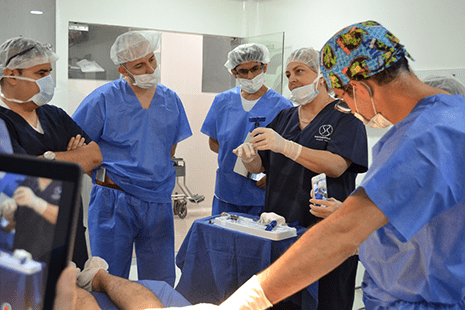
- Published in Blog
How To Choose A Platelet-Rich Plasma (PRP) Kit
MONDAY, 26 MARCH 2018 / PUBLISHED IN BLOG
Platelet-Rich Plasma (PRP) extraction methods have sparked debate due to varying reliability. Understanding how to select the best PRP kit can resolve these concerns and optimize treatment outcomes.
The Importance of Using a PRP Kit
Merely centrifuging blood in a test tube—often termed “bloody PRP”—is ineffective and may contain excessive red and white blood cells, potentially causing post-injection flare-ups. In contrast, PRP kits can concentrate platelets up to 5-7 times baseline levels, crucial for effective treatment.
Characteristics of a Good PRP Kit
Choosing the right PRP kit hinges on its ability to control platelet concentrations and eliminate unwanted cells, tailored to specific medical conditions.
Gel Separators
Kits with gel separators separate blood components via osmosis, retaining plasma and platelets while removing red and white blood cells. This method achieves modest platelet concentrations.
Buffy Coat
PRP kits that feature a buffy coat layer offer higher platelet concentrations (5-7 times baseline). The buffy coat, composed of platelets and white blood cells, is separated from red blood cells to minimize contamination.
Buffy Coat with Double Spin
Optimal for PRP quality, this kit further purifies the buffy coat by eliminating red blood cells through a second spin. This results in highly concentrated PRP with minimal red blood cell presence.
Biosafe Kit
Regarded as one of the best on the market, the Biosafe kit provides precise control over PRP production. It yields approximately 10cc of product, which can be double-spun for optimal platelet concentration. Users can customize the final product by choosing the inclusion or exclusion of red blood cells.
Understanding Leukocyte-Poor PRP
Leukocyte-poor PRP excludes white blood cells, which some believe may trigger inflammation and hinder growth factors. However, others argue that leukocytes are crucial for healing responses, promoting tissue regeneration and enhanced growth factor presence.
Choosing Filters for Leukocyte Reduction
To achieve leukocyte-poor PRP, practitioners can utilize Leukocyte Reduction (LR) filters like the CIF-LR filter, which efficiently separates white blood cells via electrostatic attraction. This ensures minimal clogging and filters out up to 99.99% of white blood cells.
Supporting Evidence for PRP
Despite skepticism, PRP’s efficacy is backed by extensive scientific research spanning decades and over 6000 studies. Patient willingness to pay out-of-pocket further underscores its perceived effectiveness, highlighting its growing popularity despite insurance coverage limitations.
Conclusion: Integrating PRP Into Practice
Choosing the right PRP kit is pivotal for optimizing treatment outcomes and patient satisfaction. With its proven benefits and increasing demand, integrating PRP into your medical practice offers a promising opportunity to enhance patient care and treatment efficacy.
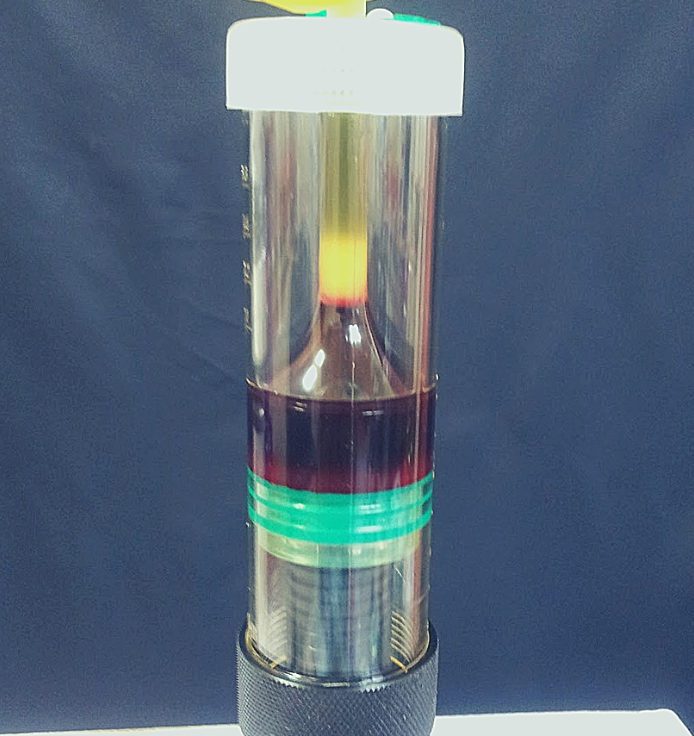
- Published in Blog
A Guide To PRP Therapy
MONDAY, 19 MARCH 2018 / PUBLISHED IN BLOG
PRP (Platelet-Rich Plasma) therapy has revolutionized treatments in rheumatology, offering effective solutions for musculoskeletal conditions like joint issues and swelling. Here’s everything you need to know about integrating PRP into your practice.
Benefits of PRP Therapy in Rheumatology
PRP therapy is a game-changer in rheumatology, providing a non-invasive alternative to surgery with minimal risk and maximum efficacy. Despite initial skepticism, PRP has proven instrumental in alleviating symptoms and enhancing patient outcomes.
Factors Influencing PRP Treatment Success
Successful PRP treatments depend on several factors:
Platelet Concentration
Utilizing a quality PRP kit is essential for concentrating platelets 5-8 times above baseline levels. Adimarket offers reliable kits that optimize platelet concentration, crucial for treatment efficacy.
Role of White Blood Cells
PRP formulations with white blood cells can expedite healing by removing dead cells and bacteria. Variants like Red Blood Cells and Platelet Serum provide additional options based on treatment needs.
Anti-Coagulants and Buffers
Using anti-coagulants during PRP preparation prevents clotting but may increase blood acidity, affecting growth factors. Incorporating buffers before injection can mitigate acidity, preserving growth factor efficacy.
Clinical Evidence Supporting PRP
Numerous studies validate PRP’s effectiveness across various conditions:
- Subacromial Tendonitis: PRP significantly reduces the need for surgery compared to traditional treatments like bupivacaine and methylprednisolone.
- Epicondylitis: PRP shows substantial improvement rates, surpassing outcomes achieved with corticosteroid treatments.
- Plantar Fasciitis: PRP demonstrates superior outcomes over corticosteroids in long-term symptom relief.
- Knee Osteoarthritis: Systematic reviews highlight PRP’s superiority over hyaluronic acid in enhancing knee joint cartilage.
Integrating PRP Into Rheumatology Practice
Embracing PRP enhances patient care by offering a safe, effective, and economical treatment option. Early adoption allows rheumatologists to lead in innovative medical practices, benefiting millions of patients seeking alternatives to invasive procedures.
Conclusion: Embrace PRP for Enhanced Patient Care
PRP therapy is not just a passing trend but a transformative approach in rheumatology. With its proven track record and increasing popularity, incorporating PRP into your practice is a proactive step towards achieving superior patient outcomes.
By partnering with Adimarket for reliable PRP kits and equipment, rheumatologists can deliver cutting-edge care that meets the growing demand for safe and effective treatment options.
- Published in Blog
Three popular PRP Treatments for Skincare
THURSDAY, 15 MARCH 2018 / PUBLISHED IN BLOG
Thousands of skincare centers across the nation provide at least one kind of PRP treatment. However, most do not go any further than micro-needling with a topical solution. This is mainly because it is far simpler than all other methods, and it is incredibly popular. However, it would make more sense for many practices that have invested in equipment to add PRP injections as well.
PRP Is Growing Substantially
Regardless of what is being treated, the protocol for obtaining PRP is the same: draw the blood, place it in the centrifuge, and then extract the PRP from the rest of the material. This simplicity, combined with PRP’s vast usability, can create significant and mind-blowing advances in modern medicine.
This includes skincare, as the PRP obtained from patients can be used in a plethora of ways. Here are a couple of examples of what can be performed by dermatologists and plastic surgeons worldwide.
Skin Augmentation
Adding a topical solution of PRP combined with microneedling can help regenerate dying skin cells and make the skin feel soft. Although this will probably work for most clients, many might want more. For instance, if you want to plump up the face, injecting PRP into the dermis can provide both beauty and a healing process.
If you want to create volume, you will need a filler. One way to do this is by using a Platelet-Poor Plasma filler (PPP), often left over from the PRP process. You can also use Hyaluronic Acid. A combination of these with PRP has been known to provide wonderful results, with some clinicians boasting a 100% success rate.
Vitiligo Correction
Many companies spend millions of dollars to find out how to turn defective cells healthy again, often looking into DNA technology. However, simply utilizing PRP may provide the same results. Some studies have shown that adding CO2 laser therapy for correcting vitiligo to a PRP treatment can increase its effectiveness by four times. This can also be beneficial in other areas, such as correcting wrinkles and even acne scars. So combining PRP treatments with conventional therapies can boost the effects tremendously.
If PRP can help boost the effects of lasers, it may also boost the effects of other skin therapies. This is a great opportunity to continue the work you do, but this time more effectively due to a simple method. Hundreds of skincare facilities are already providing this for their clients.
Hair Rejuvenation
Mesotherapy is a common treatment that utilizes microinjections to deliver medication throughout the skin’s surface. This procedure has provided great quality results by adding peptides and vitamins to the mix. However, one of the best ways to incorporate this into your practice is by using PRP therapy.
Mesotherapy can also be used to provide an even amount of PRP all over the body, including the face, neck, hands, etc. This helps to rejuvenate the skin and reduce wrinkles, discoloration, and stretch marks. However, it works best for hair loss treatments. In fact, adding PRP to mesotherapy has exceeded the industry’s expectations.
This is why PRP therapy is something every skincare clinic should offer. Since hair loss affects both men and women, it is important to make your treatments as effective as possible. Your patients will benefit from it, and satisfaction will rise. Is there any other reason to put it off?
“But I Never Heard Of Them!”
Some of these treatments and combinations are incredibly new, so new that many might not have heard of them before. This is why signing up to use them as soon as possible is vital. This way, you can be a step ahead of the competition when it comes to providing great services.
The demand for PRP is only growing over time, and the sooner you can get on board, the better off your practice will be. If you are interested in learning more about PRP therapy or checking out our line of PRP equipment, visit the Adimarket website.
PRP provides more effective treatments in less time, for less money, and with more satisfaction. Many practices have put their trust in this treatment and have been reaping the long-term benefits. PRP is here to stay. Are you ready to seize the potential of this great medical revolution.
- Published in Blog
Why Dermatologists Should Use Platelet-Rich Plasma (PRP)
WEDNESDAY, 14 MARCH 2018 / PUBLISHED IN BLOG
PRP is a powerful means of regenerating tissues and has seen substantial growth in popularity among patients, especially those who suffer from alopecia. This is despite the apparent lack of evidence that supposedly surrounds the treatment.
Is It a Lack of Evidence or Just a Lack of Funding?
The lack of widespread research may have more to do with funding than anything else. Many of the studies currently available about PRP were unfunded, especially on the subject of hair regeneration. However, despite this lack of funding, the demand for PRP treatments for hair loss is growing at an unprecedented rate.
Types of PRP Kits
When it comes to PRP kits, there are three kinds to choose from:
- Kits that use gels
- Kits that create a buffy coat
- Kits that create a buffy coat utilizing a double spin.
It is generally agreed that the last option creates the most reliable and concentrated form of PRP possible, at 5-7 times the baseline amount of platelets. This concentration level also has the most nutrients, which helps in the regeneration of blood vessels and stem cells.
Combining PRP with Micro-needling
One commonly recommended tactic is to combine PRP hair regeneration with micro-needling and a topical layer of PRP. This can be beneficial in some cases. Micro-needling creates small amounts of trauma, prompting the body to react with a healing response. This response, mixed with PRP, can help stimulate the growth of new cells.
In some instances, a dermatologist might have three sessions, with the first two being PRP injections and the middle one being micro-needling with a PRP topical solution. However, micro-needling is completely optional. Whether you choose to use this method or not, you will still be injecting the patient with PRP at the scalp.
Combining PRP with an Allograft Matrix
Many hair regeneration experts combine PRP with an allograft matrix. These are often used for healing wounds as they activate inactive adult stem cells. This makes wounds heal faster. Allografts act like a scaffold, proliferating cell regrowth and speeding up the healing process. Many experts in the field have noted a high degree of success using this method.
Allografts are generally made from pig bladder tissue. However, a better type of allograft is made from amniotic tissues and fluid. This type of allograft can be utilized with little or no chance of being rejected by the body, unlike those made from pig bladders.
Medications vs. PRP
The main drugs commonly used to regrow hair are Minoxidil and Finasteride. These were designed to prevent male pattern hair loss but did almost nothing to regrow lost hair. These drugs are known to be temporary solutions, and if patients stop taking them, the benefits quickly reverse. They are also not 100% effective at stopping hair loss but can slow the progression.
However, PRP is different. It may be the only treatment on the market that has been clinically proven to regrow hair and heal hair follicles. This means it not only slows down hair loss but actually helps with hair growth.
Many may ask how temporary the solution is, given that other drugs on the market are just temporary solutions. However, many patients report that a PRP and allograft combination treatment gave them great results lasting nearly half a decade or more with just one treatment. Each patient is different, though.
Aside from drugs, the only other option for hair loss was hair transplants. This is why PRP has been growing in popularity in hair regrowth groups. Although other treatments are not obsolete, adding PRP therapy can be both beneficial and safe for patients in the long run.
Some people combine the two, using PRP alongside Minoxidil and Finasteride with little to no side effects. You can even combine PRP with laser light scalp stimulation therapy, but that is up to you.
So Try It Out
PRP for hair regeneration, skin rejuvenation, and even facelifts is going strong with no sign of stopping. Many dermatologists have already adopted this treatment, and since it is not going anywhere anytime soon, it may be beneficial for you to join in on it too.
For more information about PRP, including equipment, check out the Adimarket website. We provide great tools for any practice to utilize.
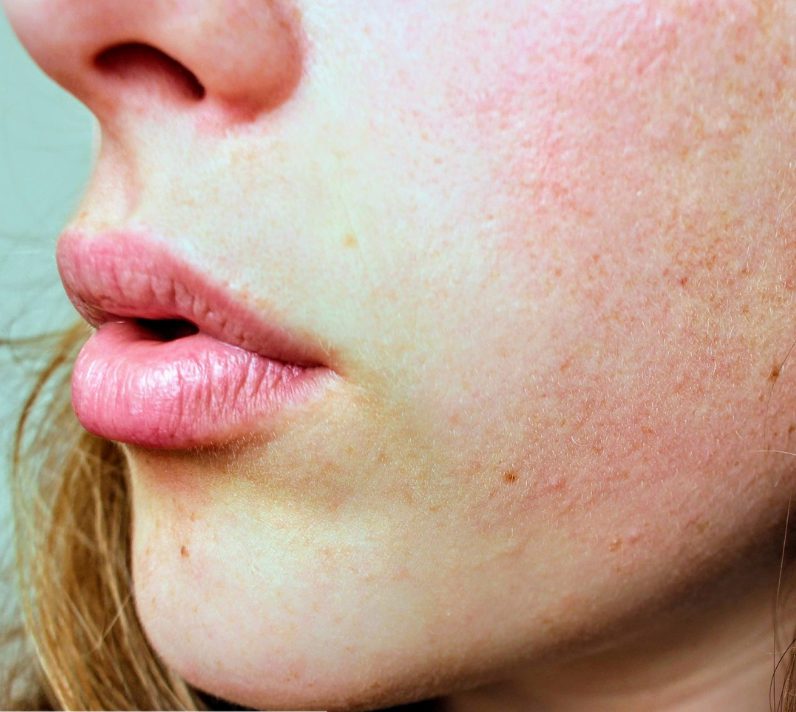
- Published in Blog
Platelet-Rich Plasma (PRP) For Osteopathic Physicians
TUESDAY, 27 FEBRUARY 2018 / PUBLISHED IN BLOG
Although they can perform surgeries, osteopathic physicians try to avoid doing so whenever possible. Because of this, PRP seems to be an excellent fit for their practice. Since Osteopathy was built on the idea of self-healing, PRP seems to be a perfect fit.
The Current State of PRP Research
A while ago, PRP research was reviewed by The Journal Of The American Osteopathic Association, which concluded that more studies and evidence are needed to make a solid statement on its efficacy. Later, a case study was filed showcasing an 18-year-old high school football player who suffered from a sports injury. The case study showed that the muscle injury healed rapidly under PRP therapy. Although PRP is not yet universally acclaimed, it doesn’t mean Osteopathic Physicians can’t learn a lot or benefit from its use in their practice.
How Osteopathic Physicians Can Benefit From PRP
It’s Holistic
Osteopathic Physicians prefer to treat the patient rather than just treating a disease or its symptoms, making PRP a great fit. PRP works by using the body’s own resources and mechanics to help it heal itself over time. Instead of merely addressing symptoms like many conventional medicines do, it tackles the problem directly.
For example, there are cases where PRP therapy has taken the place of surgery and medication. Female patients have revived their sex drive after being treated for incontinence. While PRP therapy was initially pushed by allopathic doctors, it works wonders in Osteopathic medicine and can become a key treatment method for Osteopathic physicians.
Musculoskeletal Issues
In many practices, musculoskeletal pain is a common issue for Osteopathic Physicians. PRP is quickly becoming a primary treatment for these kinds of problems. For instance, many researchers believe PRP should be the main choice for patients suffering from knee meniscus issues.
In 2016, University of Missouri Doctor Patrick Smith published an FDA-sanctioned double-blind randomized placebo-controlled clinical trial on PRP. These trials are considered the gold standard in research. The study concluded that PRP provides safe and notable benefits for people suffering from knee osteoarthritis.
The Vast Potential of PRP
The third and most important reason why all physicians, including Osteopathic Physicians, should start using PRP therapy is its wide scope. Since PRP is simple and common, it’s safe to say that if PRP works on knee joints and tendons, it likely works on other tendons, joints, bones, and muscles. PRP will soon be a commonplace treatment for nearly all musculoskeletal diseases.
This means PRP has near limitless potential. This is especially important for Osteopathic Physicians because if a patient has a wrist problem, the main issue might appear further down the arm. Multiple PRP injections in various areas can not only heal the issue but also enhance other traditional methods used. This will help restore balance to the body and give full functionality back to the patient.
Success Stories and Expert Opinions
American Academy of Regenerative Medicine Doctor Peter Lewis has administered over 100,000 PRP injections to over 12,000 patients. He claims that more than 80% of his patients who have undergone PRP therapy have had fantastic results. Even patients who were candidates for surgery have benefited from PRP.
Are PRP Treatments FDA Approved?
As of this year, PRP treatments are not yet subject to FDA approval. This is because all treatments are performed on the same day as the extraction and use only materials already inside the patient’s body. Therefore, PRP therapy falls within the scope of the FDA Code of Federal Regulation title 21, part 1270, 1271.1, making it exempt from needing approval.

- Published in Blog
What is regenerative medicine?
TUESDAY, 30 JANUARY 2018 / PUBLISHED IN BLOG
Regenerative medicine is the exciting cutting-edge “medicine of the future” which holds the hope and promise of efficacy centered around the ability of human tissue to be repaired, replaced, and healed (regenerated) once human tissues and organs are damaged or diseased. Regenerative therapies aid and supplement the natural healing mechanisms of the body. These therapies often employ the activation of stem cells to stimulate the renewal of tissue damaged by injury, disease, or age. The rapid expansion of scientific knowledge offers great promise for continuing advances in this field of medicine, which holds vast potential to improve the quality of human life.
What are Stem Cells?
Stem cells are the basic building blocks of life. They are unspecialized cells that can produce more stem cells through mitosis or differentiate into specialized cells that carry out specific functions in the body. Stem cells are found throughout the body’s tissues, organs, and systems, although usually in small quantities in adults.
What are Hematopoietic Stem Cells?
Hematopoietic stem cells (HSCs) can give rise to all types of blood cells, including red blood cells, white blood cells, and platelets. They are particularly useful in the treatment of blood-related diseases and conditions.
What are Mesenchymal Stem Cells?
Mesenchymal Stem Cells (MSCs) are multipotent stromal cells that are non-blood-forming stem cells and can differentiate into a variety of cell types, including muscle, bone, cartilage, and fat cells.
When introduced into a patient’s body, MSCs can repair or replace damaged or degenerating tissue by communicating with the surrounding cells, causing a cellular cascade of healing (paracrine signaling).
The History and Potential of MSCs
Historically, the term MSC was coined in the late ’80s by the biomedical research authority, Dr. Arnold Caplan of Case Western Reserve. The acronym has recently been redefined by Caplan to “Medicinal Signaling Cell” since these cells secrete powerful bioactive molecules involved in cellular signaling and regeneration. Caplan now describes MSCs as a “multisite-regulatory dispensary” (Natural Drug Store).
The production of MSCs in the human body can be precipitated by bioactive placental tissues containing Growth Factors, Cytokines, and other powerful bioactive agents which trigger cell signaling.
The remarkable ability of MSCs makes them irreplaceable in medical treatments.
Accessible Sources of Stem Cells
Stem cells can be extracted from various parts of the body. They have been extracted from bone marrow and adipose tissue for a few decades. More recently, birth tissues from live births, including umbilical cord blood, cord tissue with Wharton’s Jelly, and amniotic membrane tissue, have been found to be a rich source of both HSCs and MSCs. These tissues precipitate target tissue production of MSCs through paracrine signaling. Growth Factors, Cytokines, Exosomes, and micro-RNA from birth tissues give rise to stem cells in this way. These cells, as well as MSCs contained in Wharton’s Jelly, tend to be more fit than adult stem cells.
Wharton’s Jelly
Wharton’s jelly is a gelatinous substance found in the umbilical cord, which is rich in stem cells. Studies have shown that mesenchymal stem cells (MSCs) have low immunogenicity. Human umbilical cord Wharton’s jelly provides a new source for MSCs that are highly proliferative and have multi-differentiation potential. Wharton’s Jelly Cells (WJCs) express MSC markers but low levels of human leukocyte antigen (HLA)-ABC and no HLA-DR. WJCs have low functional immunogenicity, and therefore recipient rejection has not been documented.
Advanced Regenerative Medicine
Advanced Regenerative Medicine involves the use of regenerative biomolecules, tissue engineering, and stem cells to treat diseased or injured tissues.
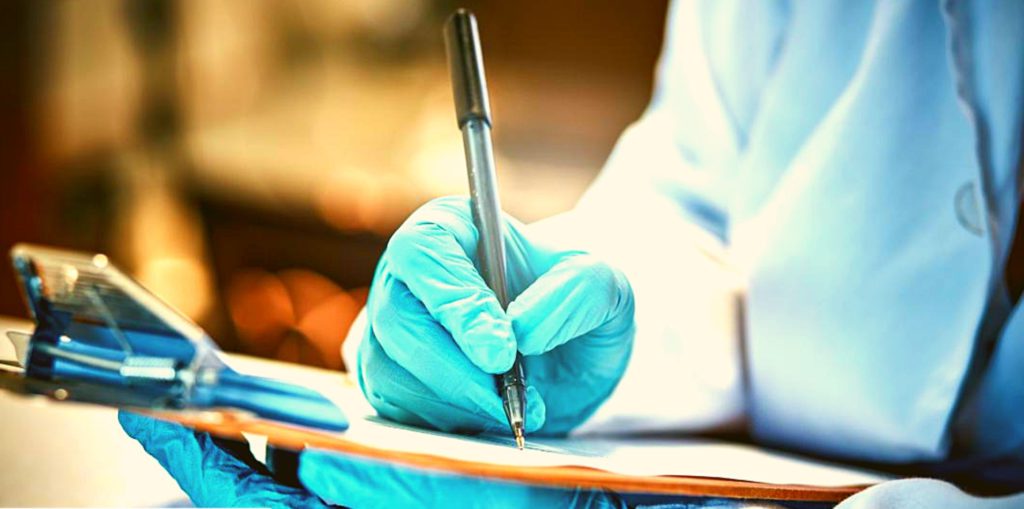
- Published in Blog
Photobiomodulation and why do we use a LED to irradiate PRP
Exploring the Power of Platelet-Rich Plasma (PRP) in Regenerative Medicine
WEDNESDAY, 14 MARCH 2018 / PUBLISHED IN BLOG
We have been in the regenerative medicine specialty for about 8 years. Like pretty much everyone, we started by using Platelet-Rich Plasma (PRP). We learned about it, were fascinated by it, and treated our patients with it. Patients loved it, and so did we.
The Versatility of PRP
PRP, if obtained and used correctly, is a very powerful tool to implement in any medical practice. It is especially useful for treating the elderly, osteoarthritis, wear and tear of tendons and ligaments, and loss of vitality. PRP is also frequently used in plastic and reconstructive surgery for wound care, scar improvement, and overall rejuvenation of the skin.
How Does PRP Work?
We are all familiar with platelets. They have significant power and influence over tissue regeneration. By concentrating them in a blood sample, we can obtain signaling proteins, cytokines, and growth factors. Adding white blood cells to the mix creates what is called L-PRP (leukocyte-rich PRP), making that “soup” even more potent.
Activating PRP for Maximum Benefits
To harness the power of these bioactive substances, we need to coax the cells into releasing them. Normally, platelets get activated by the addition of calcium or by contact with collagen. However, several studies have demonstrated the influence of low-intensity laser on the activity of some cells. This effect is called “Photobiomodulation.”
Understanding Photobiomodulation
Photobiomodulation is a form of light therapy that uses non-ionizing light sources, like LEDs or Helium-Neon lasers, to produce photochemical events at various biological scales. It has been demonstrated that this light interacts with the enzyme Cytochrome C oxidase, which is crucial in mitochondrial processes.
The Impact of Low-Level Laser Therapy
Several scientists studied this light and its effects on cellular cultures. They found that cells proliferate more when exposed to low-level laser and showed increased viability. We compared the levels of cytokines and growth factors in irradiated and non-irradiated samples. Sure enough, some growth factors even tripled in concentration after laser exposure. The famous Interleukin 10, an anti-inflammatory protein, doubled its levels, and endorphins were released in high levels.
Benefits of Photobiomodulation
The photobiomodulation process provides extraordinary benefits in pain management, inflammation reduction, immunomodulation, and promotion of wound healing and tissue regeneration. It plays a fundamental part in our protocols.
Conclusion
Isn’t it all amazing? The potential of PRP and photobiomodulation in regenerative medicine continues to astonish us. We will see you in the next blog. Keep your cells healthy!
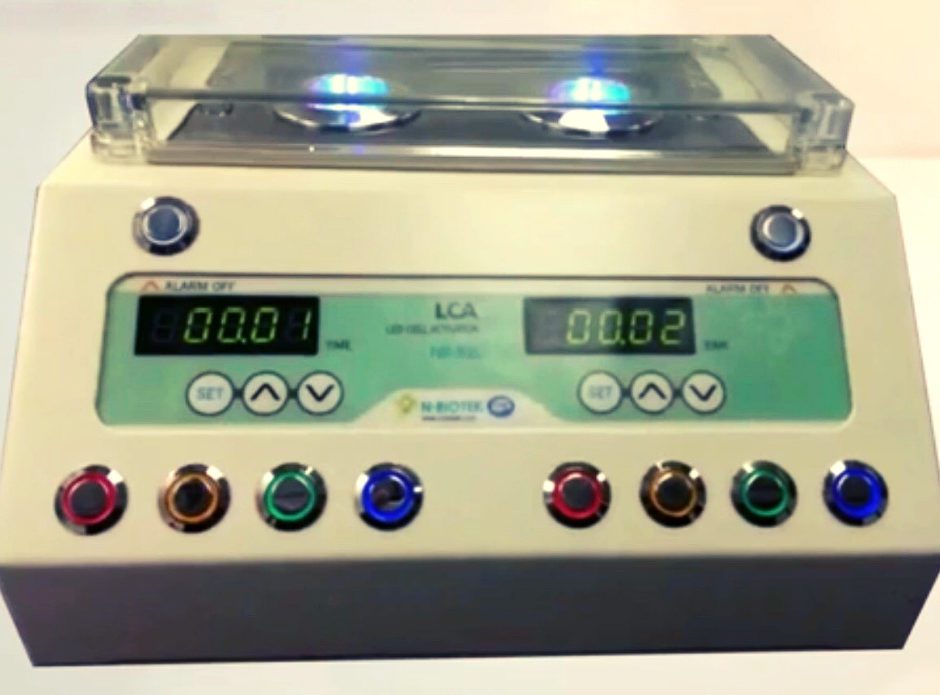
- Published in Blog
PRP and Stem Cell Treatments Being Studied for Hair Loss
TUESDAY, 23 JANUARY 2018 / PUBLISHED IN BLOG
Hair loss is very common, with tens of millions, if not hundreds of millions, of people all over the world suffering from it. Hundreds of thousands of people decide to utilize hair restoration therapy and other procedures in order to try to get at least some of their former hair back. Although some treatments are effective, most of the time, they only move already existing hair from one place to another. However, with stem cell therapy, we try to help new hair grow by helping the follicles to regenerate.
The Role of Adimarket in Hair Restoration
Adimarket, alongside a few other companies, helps provide new and reliable uses for PRP and stem cell therapies. We provide the equipment and other services so that doctors and practices can offer these treatments to their patients.
Promising Advances in PRP and Stem Cell Therapies
While the main proponents of PRP and stem cell therapies are smaller companies like us, many other people, including doctors and practices, are also discussing and seeing potential in these therapies. For example, Dr. Lazaro M Garcia, a doctor from Miami, already utilizes PRP and stem cell therapy for people who suffer from hair loss and is currently conducting a study supported by the National Institutes of Health.
How the Study Works
To participate in the study, patients pay a small fee, which varies based on their study stage. Afterwards, they receive two injections of PRP and stem cells made from their own body over three months. Dr. Garcia uses the body’s own growth factors to increase the amount of blood and nutrients to the otherwise dead hair follicles. This revitalizes the dead follicles and promotes new hair growth.
How PRP is Made
To make Platelet-Rich Plasma (PRP), the patient’s own blood, which can come from either bone marrow or other fat sources, is used. The blood is then placed into a centrifuge, which concentrates the composition and allows it to be injected into the treatment site. While it is a relatively simple procedure, some training is still necessary to ensure that it is done safely.
Adimarket’s Equipment Offerings
At Adimarket, we do not perform stem cell and PRP therapies, but we do offer the equipment so that doctors and practices can do so themselves. Our offerings include amniotic tissue, stem cell and PRP kits, centrifuge devices, and more. Practices and doctors can order directly from us.
The Importance of Quality PRP Systems
It is important to note that not all PRP systems are equal. Our system uses a closed tabletop system that can process PRP in under 10 minutes. For more information, contact us or visit our website.
Conclusion
Hair loss is a serious problem, with many people suffering from it. Thanks to PRP and stem cell therapies, we no longer have to rely solely on hair replacement surgery to help patients. PRP and stem cell therapies may be the best solutions available for both your patients and your practice.
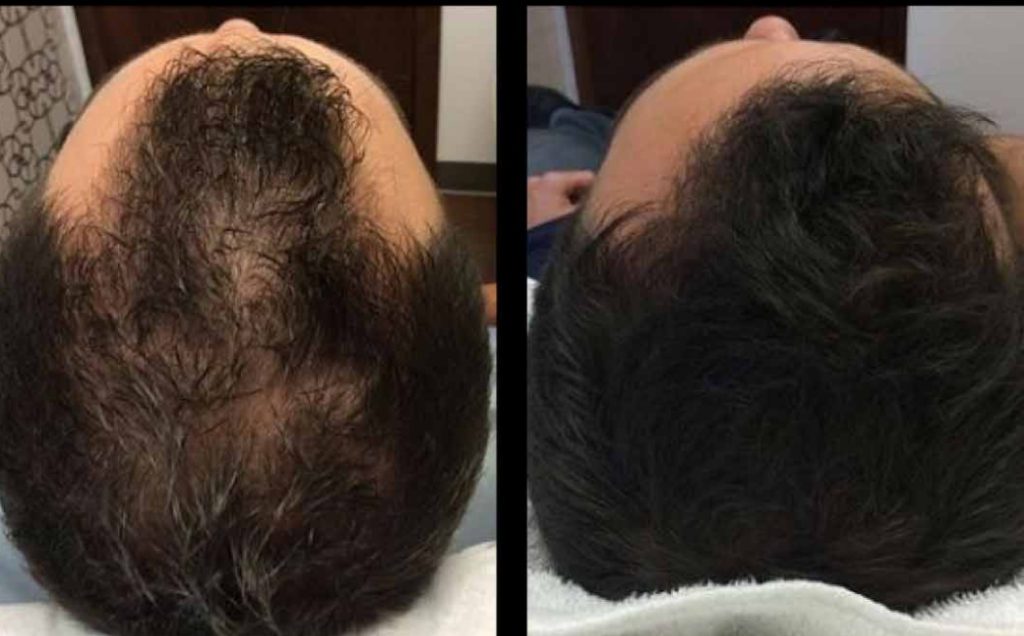
- Published in Blog


